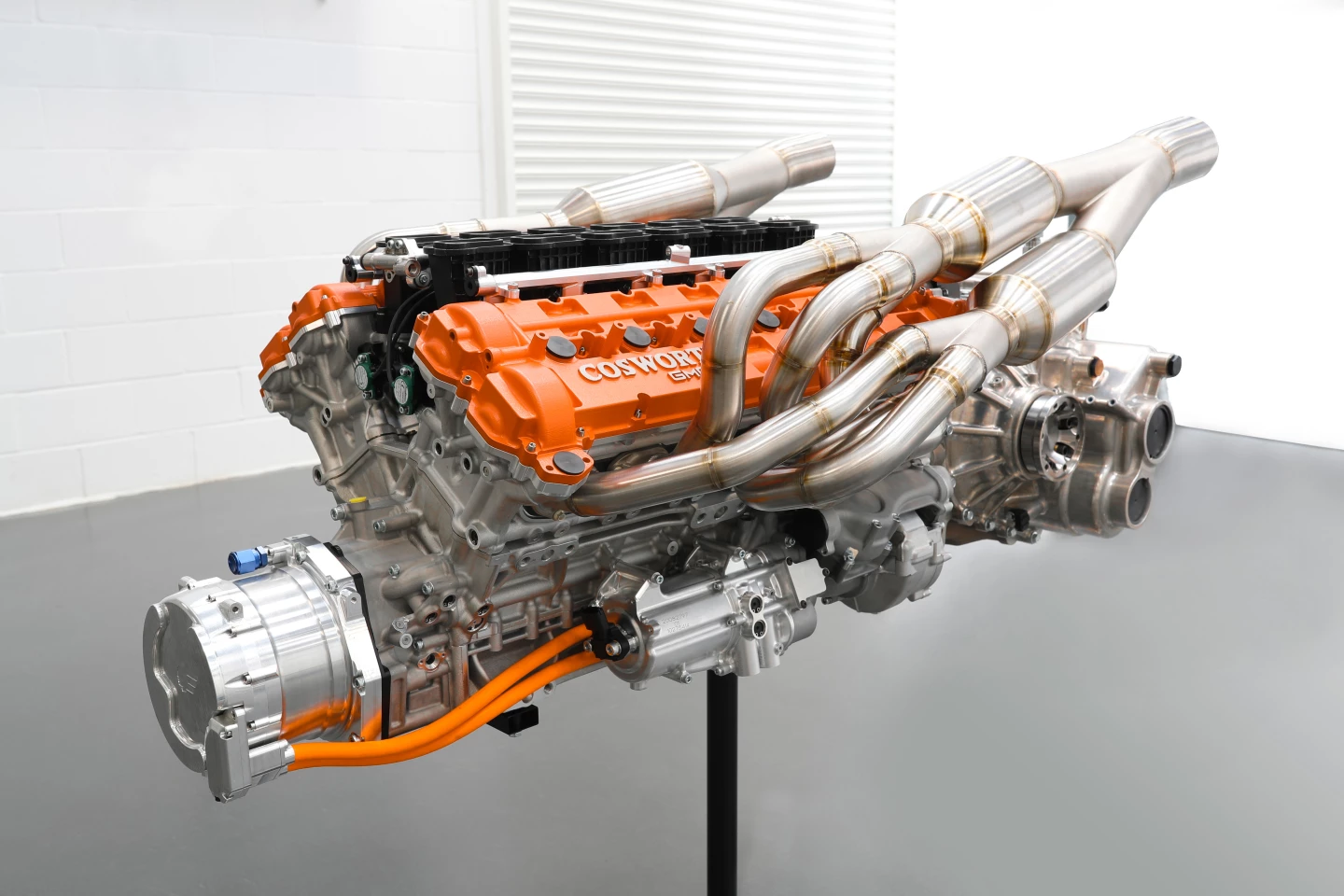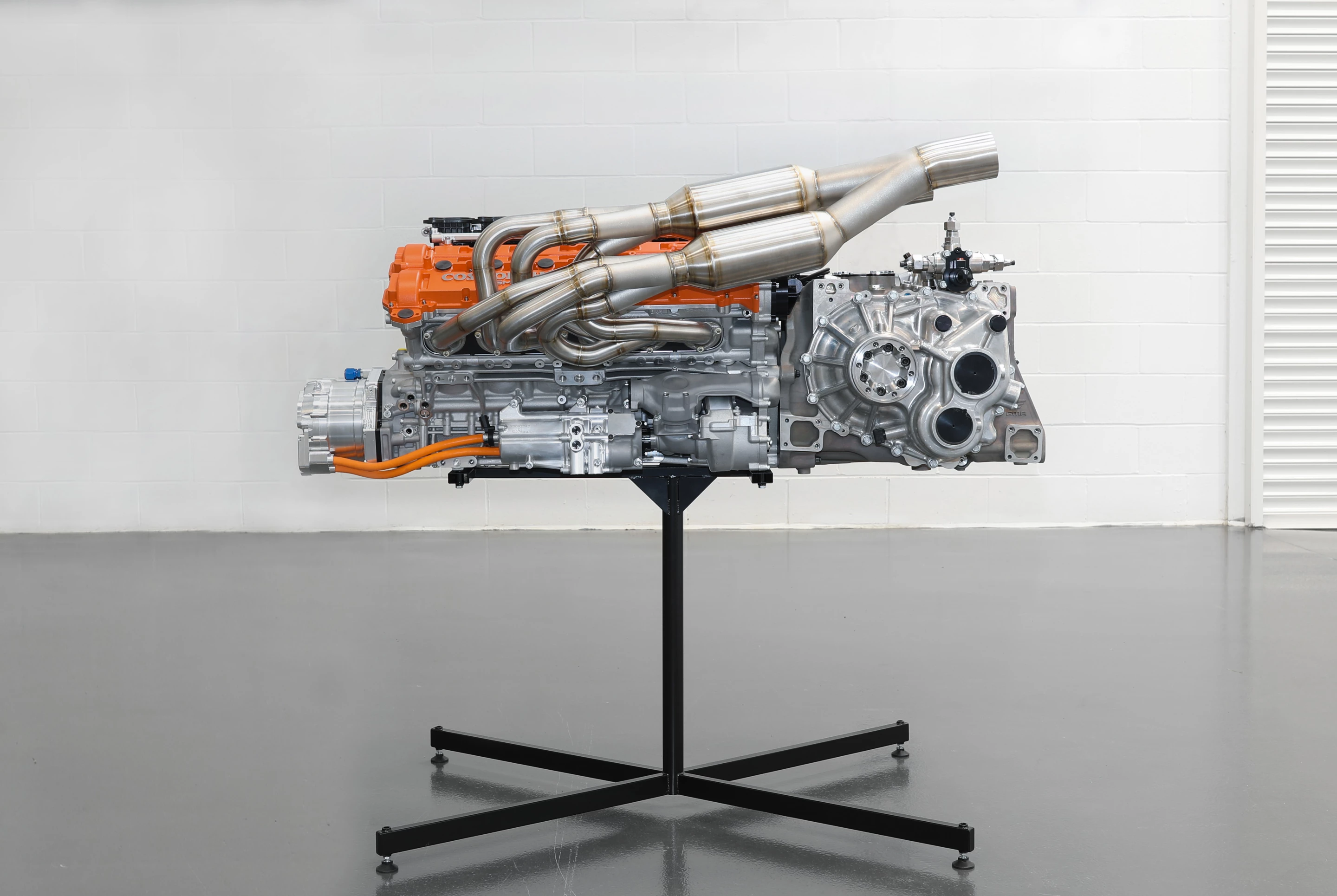The supercar of the year – perhaps indeed the decade, early though it is – has finally fully launched, and we've now got a trove of images of the first car that Formula One/McLaren F1 design genius Gordon Murray says he's truly 100 percent happy with.
Only 100 T.50 supercars will be made, at a price of US$3.1 million before taxes. If that sounds like a lot of money, you're missing the point; the halo around this machine and the man that created it make it a virtually certain bet that anyone lucky enough to get on the list will see their investment absolutely skyrocket over time. The last supercar Murray designed, the McLaren F1, originally sold for around US$800 grand, and some are now selling for close to US$20 million.
So the T.50 is just about guaranteed to be a money-printing machine for its owners provided they keep the mileage low. And that's very sad, in a way, because nearly every fiber of Murray's being has gone into making this thing the most exciting, precise, involving and exhilarating driver's car a man with his imagination and resources could dream into existence.
His remaining being fibers have been put to work ensuring that every component in the car, seen or unseen, are engineering art as well as incredibly lightweight and high performance. After 20 years in Formula One and more in automotive design, this is his magnum opus.

The average supercar, by Murray's estimates, weighs around 1,400 kg (~3,100 lb), and for a man who's spent so much time in racing, that sort of thing will simply not do. The T.50 weighs 980 kg (2,160 lb), making it lighter than a Mazda MX5 despite the fact that it rocks a monster mid-mounted V12 Cosworth engine and has three seats instead of two and more luggage space than you'd expect.
Those three seats are configured jet-fighter style with the driver front and center, offering total unimpeded visibility as you sling the car through corners. Even the passengers get an excellent view, with each able to see right across to the opposite A-pillar and enjoy a full view of the road ahead.
We've already written about the naturally aspirated engine at length, but to briefly recap it's a 3.9-liter, 654-horsepower, 467 Nm (344 lb-ft) V12 and an absolute marvel in its own right. It's the highest revving production car engine in history by a large margin, revving to 12,100 rpm. It's the lightest road car V12 ever at 178 kg (392 lb). It's the most power-dense naturally aspirated production car engine ever, at 164 horsepower per liter.
Folks who can't grapple with the mysteries of the highly endangered third pedal need not apply
Murray says it'll be the most responsive production engine ever built, as well, revving from idle to its sky-high redline in three tenths of a second in neutral. It's hard to quantify how good something sounds, but we believe Murray when he says it's the greatest sounding V12 street car of all time. Its crazed howling sets my arm hairs on end, and the cabin has been designed to use the roof of the car as a resonant soundboard to amplify the experience as the revs come up, through the roof-mounted air intake.

Combined with a handy 50-odd horsepower electric boost from the fan motor under certain circumstances, you're looking at a car that makes in excess of 700 horsepower. It's not hypercar territory, but that hardly matters. This will be more usable and involving than any of the world's most powerful cars.
The gearbox is its own wonder, a bespoke Xtrac creation that Murray says is the lightest supercar gearbox ever built, at 80.5 kg (177.5 lb). No paddle-shift hand holding here, it's a six-speed H-pattern manual with the first five gears bunched tightly together for serious fun and the sixth added as a highway cruising consideration. Folks who can't grapple with the mysteries of the highly endangered third pedal need not apply.
The chassis is a carbon fiber monocoque tuned for extreme stiffness and torsional rigidity, including an F1-style passenger safety cell. The bodywork, likewise, is carbon all over, and the chassis and body together weigh just 150 kg (331 lb). The doors are a dihedral event to open, and indeed the engine bay and luggage areas can also be accessed through their own set of extravagant gull wings. Here they are opening and closing in party mode:
The T.50's aerodynamics are as outrageous as the rest of it, and again we've covered them before in full detail. But to recap, this machine reprises Murray's greatest hit in Formula One. But the 1976 Brabham Fan Car, according to Murray, was a "blunt instrument" – a big ol' vacuum, no more, no less, designed purely to suck the BT46 down onto the road. It may have blitzed the F1 field in its only race, but it had little of the versatility and genius Murray has applied to the fan system on the T.50.
This one operates in no fewer than six different modes, combined with the T.50's active underbody aeros and a pair of dynamic rear spoilers. Under hard braking, the fan spins up, the rear spoilers pop all the way up to 45 degrees, the diffuser valves open, and the downforce on the car is instantly doubled to pull you up some 10 meters (33 ft) shorter from 150 mph.
In High Downforce mode, the spoilers sit at 10 degrees and the fan runs at an optimal speed to give you 50 percent more downforce in the corners without compromising too much on drag. In Streamline mode, the spoilers drop to -10 degrees and the diffuser valves close, but the fan runs fast to push air out the back, creating a "virtual longtail" that reduces the car's drag by 12.5 percent while adding 15 kg (33 lb) of air thrust.

V-Max Boost mode does the same as Streamline mode, but uses the car's 48V starter/generator to drive the fan so the fan motor can send its power to the wheels instead. The whole shebang can be set to make its own decisions automatically, or to show off its chops at a standstill. There's a gauge on the dash that shows the level of downforce the fans and diffusers are adding at any given moment.
In terms of looks, the final photos of the car don't disappoint. This is a unique machine with none of the flicks, scoops, big air tunnels and wings that you'd expect form a car so obsessed with downforce and grip. Murray calls it a visually "pure" design, although anyone driving behind you will think they're following the batmobile with that big fan dominating the rear end.
The interior achieves a McLaren-esque sparsity and focus, with sporty seats and plenty of leg room all round. Every control from the gearshift to the tasteful pedals, knobs and dials has been the focus of intense Murray scrutiny, he assures us, and nearly every component is hewn from a solid block of aluminum, including the needle in the analog tacho.

There are screens, but no touch screens; Murray is from the old school of tactile controls and we think we might be, too. Still, the mirrors are digital, and there's Apple CarPlay and Android Auto to handle navigation and control the 10-speaker, 700-Watt Arcam stereo if the sound of a shrieking V12 isn't enough aural stimulation for you.
Supercars are supposed to be all about excess, presence, ludicrous performance and the elusive "special" factor, and the T.50 delivers all of those in spades. But this car adds something else that no other machine can really claim; it's the unfiltered, untarnished vision of a single man who's spent 20 years designing Formula One cars, and who designed the McLaren F1, still many people's pick as the greatest car of all time, as a practice run. Gordon Murray got to start this project with a blank sheet, final say on everything, and very few constraints thanks to the knowledge that whatever he built would sell at any price.
As a result, he's built his own dream car here in the same way that Christian Von Koenigsegg, Horacio Pagani and Mate Rimac have – but with entirely different priorities to any of these luminaries. His insistence on a naturally aspirated V12 in the face of an industry shifting towards electrification will provide the closest thing on the road to the experience of driving the screaming F1 cars he loves, and the T.50's direct, hand-made, analog approach will surely make it an unforgettable drive even before that crazy fan system kicks in.
We truly hope it makes its way to at least a few buyers that are prepared to thrash the thing instead of treating it as garage jewelry and a money making scheme.
Enjoy a short video below.
Source: Gordon Murray Automotive






















